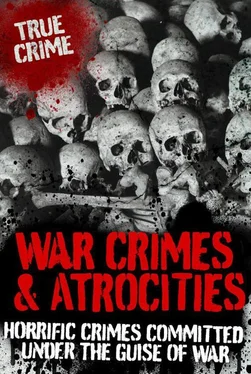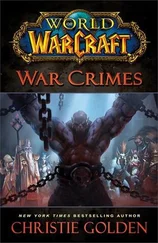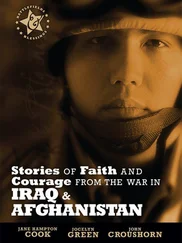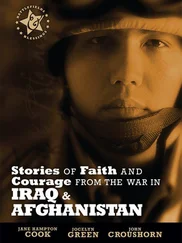LE PARADIS MASSACRE
On 26 May, 1940, soldiers from the British Royal Norfolk Regiment were stationed at Le Paradis in Pas-de-Calais. They were not fighting, but were part of manoeuvres by the British Expeditionary Force. However, they were captured by troops of the SS Totenkopf Division, or ‘Death’s Head’ Division. The commander of the division, SS Obersturmführer Fritz Knoechlein, ordered that 99 prisoners were to be marched to some farm buildings in the countryside and lined up against a wall. They were then machine-gunned to death by his men. Only two survived: Private William O’Callaghan and Private Albert Pooley, who had managed to hide in a pig sty. Later, the pair were captured by the Germans and sent to a prisoner-of-war camp, but at least they had been lucky enough to escape with their lives. After the shootings, the German troops buried the bodies in shallow graves near where they had fallen. Two years later, local French people dug them up and gave them a proper burial in the local churchyard, which is now a war cemetery.
It was not until after the war that the crime was investigated, and the leader of the division, Knoechlein, brought to trial in Hamburg. He was found guilty of the atrocity and received the death penalty. On 28 January, 1949, he was hanged. Today, a memorial plaque on the barn wall where the men had been lined up and shot commemorates the terrible massacre that took place there during the dark days of France’s occupation.
WORMHOUDT ATROCITY
Only one day after the massacre at Le Paradis, around 80 prisoners British and French soldiers were shot by the Liebstandarte SS Adolf Hitler, a German infantry regiment under the command of Sepp Dietrich. These unfortunate soldiers were taken to a barn outside the town of Wormhoudt, Pas-de-Calais, and pushed roughly inside. This included soldiers who were already wounded, who did not have room to lie down inside the building.
It was then that the nightmare began. The SS soldiers stood outside and threw stick grenades into the barn, causing many of the imprisoned soldiers to die or suffer terrible wounds as shrapnel tore into their bodies. Those who managed to survive were taken out of the barn five at a time, and each one shot dead by a hail of bullets as they emerged. In the wake of the massacre, the Nazis buried the victims in a mass grave near the barn, but the bodies were later dug up and buried in cemeteries nearby, in an attempt to cover up the crime.
Only 15 wounded soldiers survived the attack, and they were later found by other German troops. Luckily for them, these regular troops treated them better, dressing their wounds before sending them to a prisoner-of-war camp, where they remained for the rest of the conflict. After the war, the man held to be immediately responsible for the deaths of the soldiers, Hauptsturmführer Wilhelm Mohnke, was tracked down. A campaign was mounted by a British MP, Jeff Rooker, to bring him to trial, but it was eventually found that there was insufficient evidence to charge him. Thus, sadly, no one was held accountable for one of the worst massacres of prisoners to take place in France during World War II.
ARDENNES CAMPAIGN
Another example of Nazi brutality was the treatment of Canadian soldiers in the Ardennes campaign, many of whom were shot after being captured. On one occasion, on 8 June, 1944, 37 Canadian prisoners, some of them wounded, were taken to a field near the village of Le Mesnil-Patty and ordered to sit down. They then waited until a group of German soldiers arrived on a truck, armed with machine guns. As they got out of the truck and walked towards the prisoners, they opened fire on them, killing all but two of them dead. The surviving pair escaped with their lives, but were later captured and sent to a prisoner-of-war camp for the duration of the conflict.
On a further occasion, around 40 Canadians from the North Nova Scotia Highlanders were captured and shot, one by one, as they were marched to the German headquarters. In some cases, the dead bodies were put into the centre of the road for passing trucks and tanks to run over. When French civilians tried to pull the bodies out of the way, they were ordered to leave them there. Back at headquarters, in the Abbaye Ardenne, 20 Canadian soldiers were locked up in a stable, then taken out and shot in the back of the head. In another instance, 26 Canadian prisoners of war were shot by an SS Hitler Jugend Division, at the Château d’Audrieu.
So brutal were the Hitler Jugend Division as a whole that they were branded ‘the Murder Division’ by the Allied forces.
THE UNKNOWN SOLDIERS
In the aftermath of the war, the toll of war crimes against Canadian troops was assessed, establishing that a total of 134 Canadian soldiers had been victims of these atrocities. SS Brigadeführer Kurt Meyer, who had been responsible for the atrocity at the Abbeye Ardenne, was finally brought to trial at Aurich, Germany, and convicted by a Canadian military court. He received the death sentence, but this was later commuted and he was eventually released on parole in 1954, after spending many years in German and Canadian prisons. In 1961, Meyer died of a heart attack, aged 51.
Sadly, however, by the end of the war there were many Allied soldiers whose bodies were never recovered. In many cases, the Nazis had tried to cover up the massacres and atrocities, hiding the bodies or disposing of them in unmarked graves, so that the soldiers did not receive a proper burial. Neither did the Germans record the names of those who died. Also, it was the Nazis’ practise to divest the soldiers of all their belongings before they were shot, removing their pay books, documents and identity tags, so that the bodies could not be identified later on. Naturally, the fact that the bodies had gone missing was a great source of anguish for their relatives and communities, who did not have the chance to visit their loved ones’ graves and to mourn them properly. For this reason, many towns and villages commemorated their dead by erecting war memorials. In this way, they were able to ensure that even those whose bodies had been buried in unmarked plots and mass graves on the field of war would never be forgotten.
1940–44

During World War II, the Nazis wreaked vengeance on those civilians they suspected of opposing them, whether by harbouring or helping Jews, or by committing acts of sabotage, or by other acts of resistance. This was particularly so in France, which after the surrender of the French forces in 1940, pursued a policy of collaboration with the Nazis through the government at Vichy, in return for peace. This was widely opposed by many Frenchmen and women, and a resistance movement soon arose, both within and outside the country, which was secretly supported by many ordinary French citizens, particularly those living in the rural areas of France.
REPRISALS
Knowing how much they were loathed by the ordinary country people of France, the Nazis constantly suspected individuals – and sometimes whole communities – of helping the guerrilla resistance movement, or ‘maquis’, as it was known. The regime did not tolerate any form of opposition and took savage revenge on the suspects. In this way, the Nazis maintained a rule of terror in the country; however, there were many who were brave enough to risk their lives, and the lives of their families, to stand up against the tyranny of the regime.
One such example was at Oradour-sur-Glane in the Limousin region of France. This small town was in the occupied region of France (the country had been divided into occupied zones, with a zone ruled by the French government at Vichy). In 1944, towards the end of the conflict, as the Nazis were becoming more and more desperate to maintain their power, it became the locus of a terrible atrocity in which hundreds of residents were brutally slaughtered.
Читать дальше













